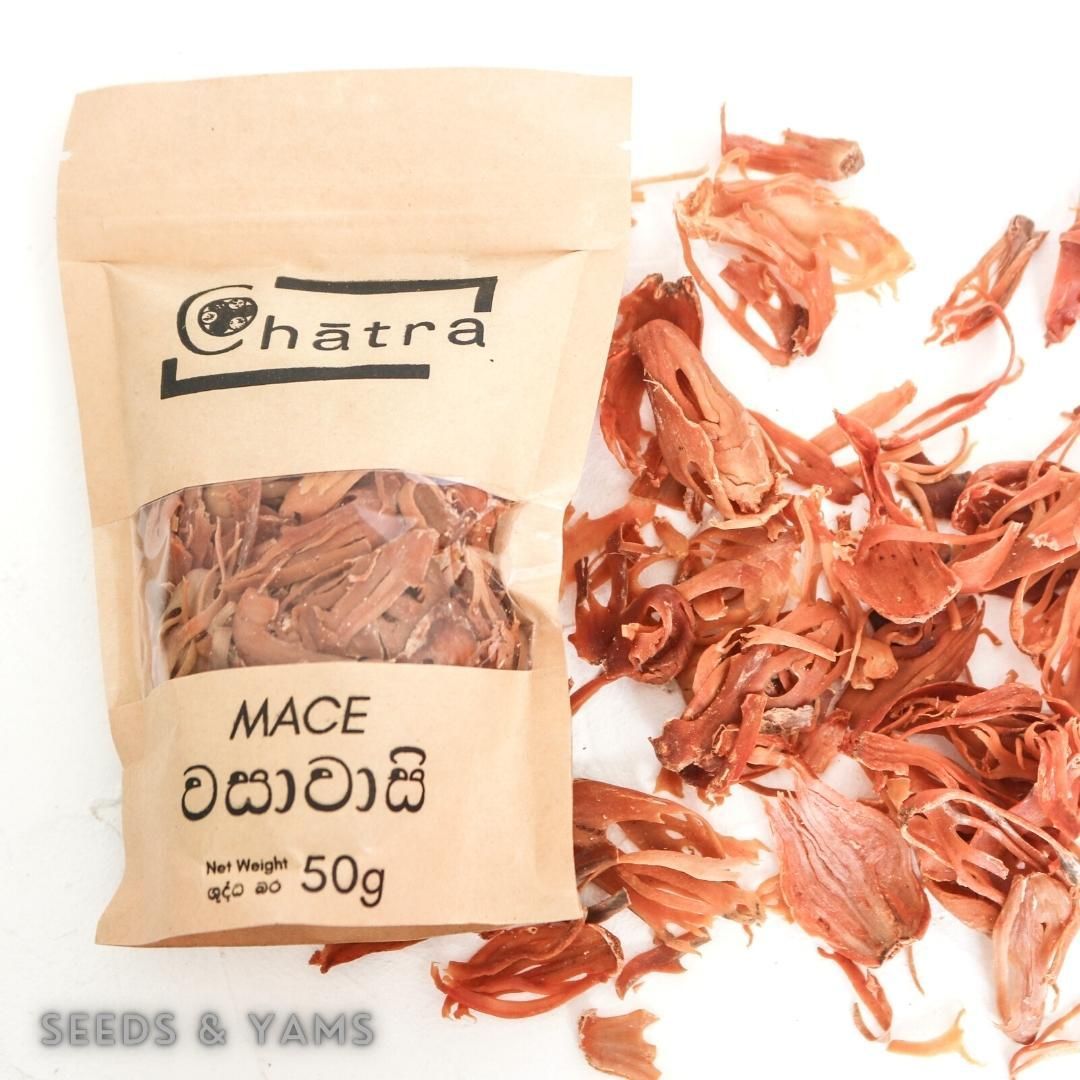Ceylon Organic House
Mace - 50g
Mace - 50g
Regular price
Rs 795.00 LKR
Regular price
Sale price
Rs 795.00 LKR
Unit price
per
Shipping calculated at checkout.
Couldn't load pickup availability
Mace is the dried aril of the seed of Myristica fragrans and constitutes 2.0–2.5% by weight of the fruit. Myristica fragrans, which is commonly known as Nutmeg, is an indigenous tree to the Moluccas in East Indonesia. Mace is available in both ground and dried "blades," and it is frequently combined with other fragrant spices. The crimson lacy covering (called the aril) that encases the nutmeg seed is known as mace. When the fruit of the tree matures, it breaks apart to reveal the aril and seed.
Nutmeg bears in the seventh year, and harvest rises with time. The average yield of mace is 1-1.5kg dry mace per tree per year. When the fruit is harvested, the aril is removed by hand and it is pressed and dried for 10 to 14 days outdoors. The red aril dries to an amber-, yellow-, or orange-brown shade and is known as a "blade" of mace when left intact. The blades are offered whole or crushed into a spice.
Mace is used in treatments for Diabetes, Flatulency, Nausea, Vomiting, Diarrhoea, Pains, and Dyspepsia. Many of mace’s secondary metabolites have biological properties that support its use in traditional medicine. According to the literature, mace contains 8.1 calories per 1.7g serving. This serving contains 0.6g of fat, 0.1g of protein, and 0.9g of carbohydrate.
When stored correctly in a firmly sealed jar or container in a cool, dark environment, mace has a longer shelf life compared to most other spices. Ground mace and blades can keep their taste for up to a year, however, the effectiveness may fade after six to eight months.
Nutmeg bears in the seventh year, and harvest rises with time. The average yield of mace is 1-1.5kg dry mace per tree per year. When the fruit is harvested, the aril is removed by hand and it is pressed and dried for 10 to 14 days outdoors. The red aril dries to an amber-, yellow-, or orange-brown shade and is known as a "blade" of mace when left intact. The blades are offered whole or crushed into a spice.
Mace is used in treatments for Diabetes, Flatulency, Nausea, Vomiting, Diarrhoea, Pains, and Dyspepsia. Many of mace’s secondary metabolites have biological properties that support its use in traditional medicine. According to the literature, mace contains 8.1 calories per 1.7g serving. This serving contains 0.6g of fat, 0.1g of protein, and 0.9g of carbohydrate.
When stored correctly in a firmly sealed jar or container in a cool, dark environment, mace has a longer shelf life compared to most other spices. Ground mace and blades can keep their taste for up to a year, however, the effectiveness may fade after six to eight months.




